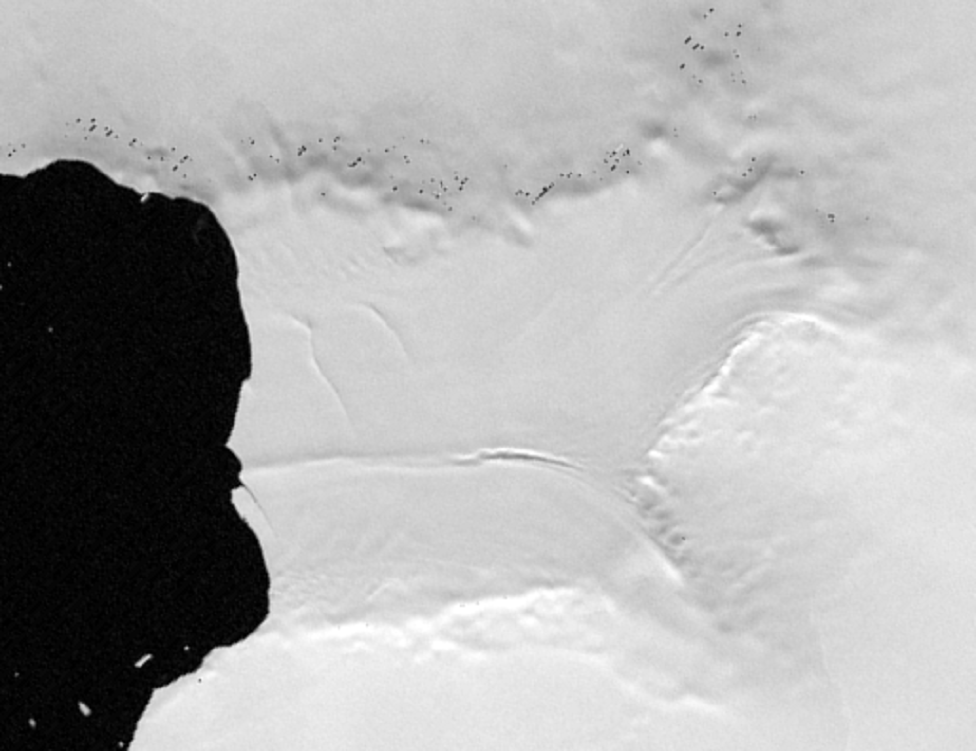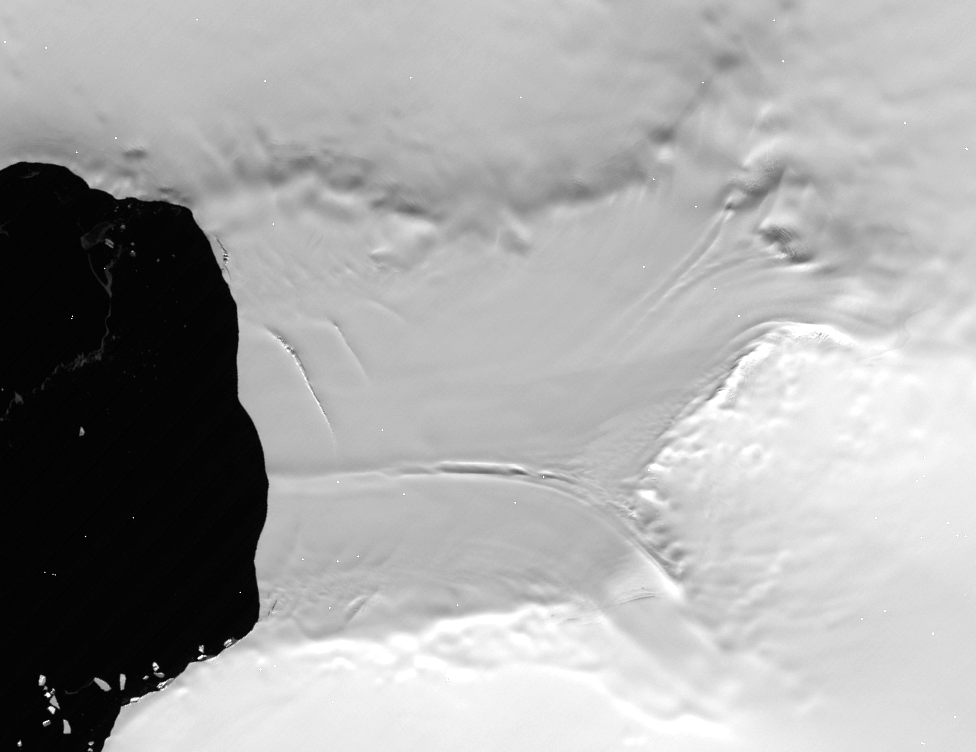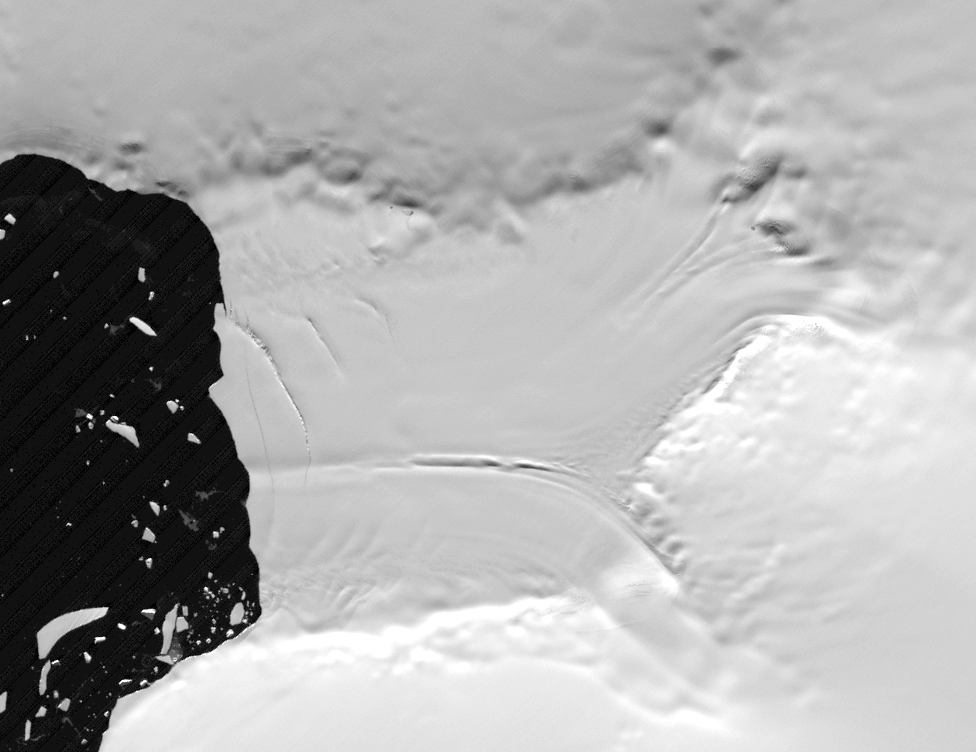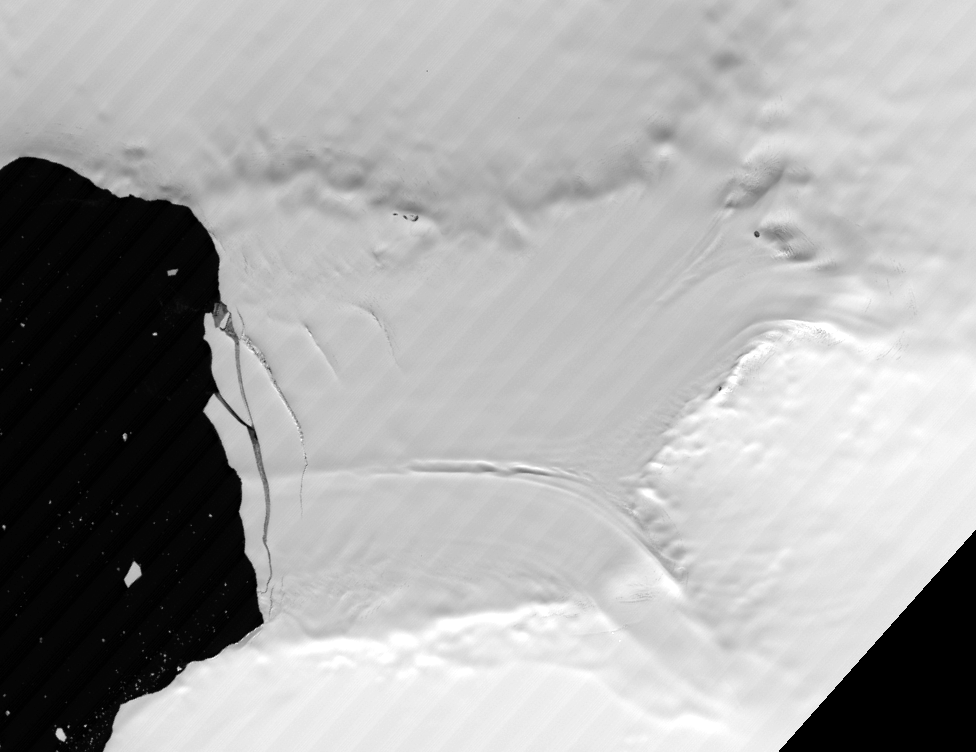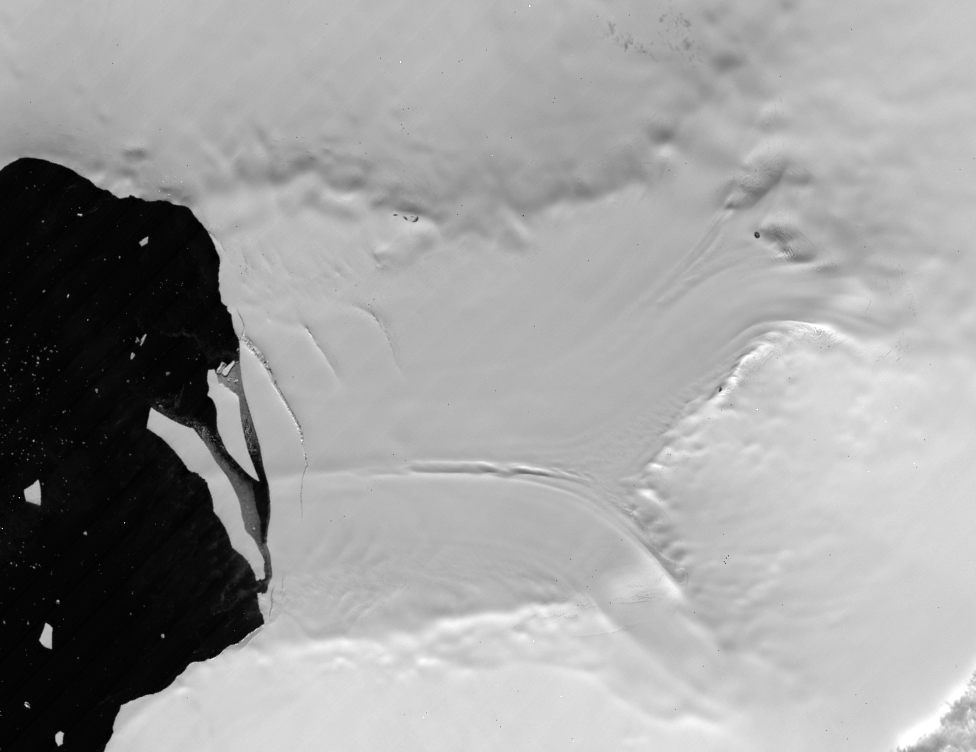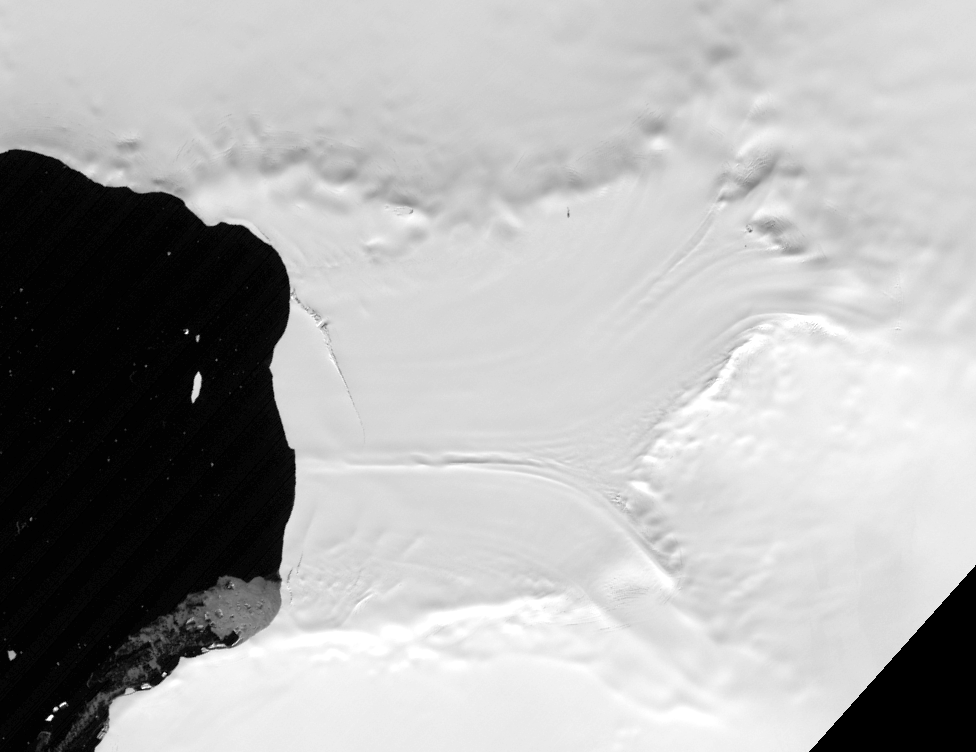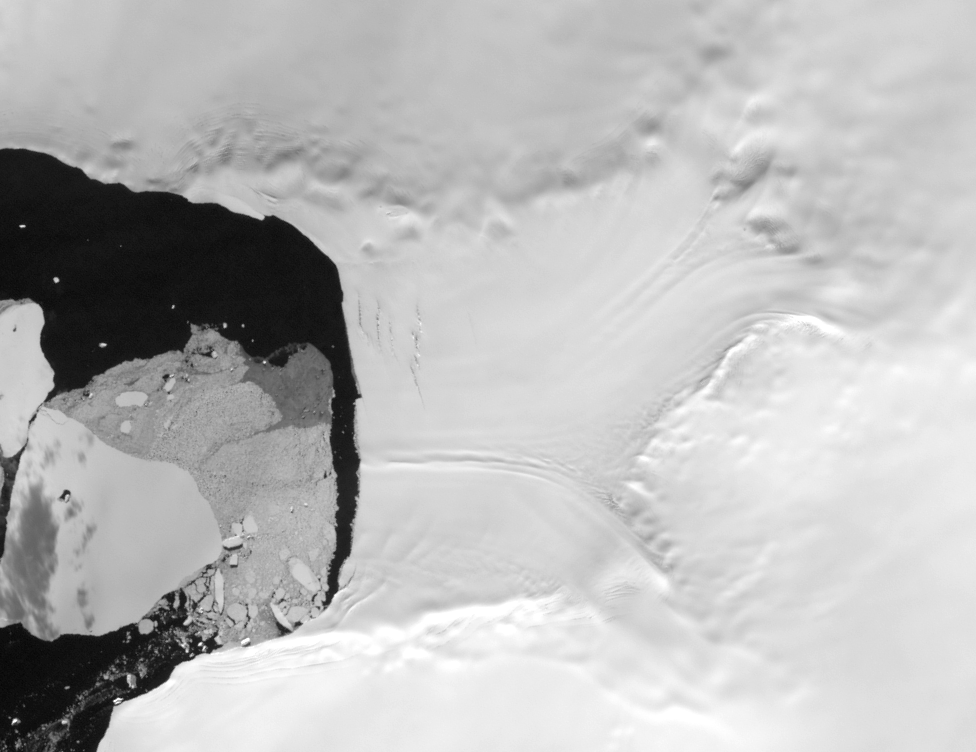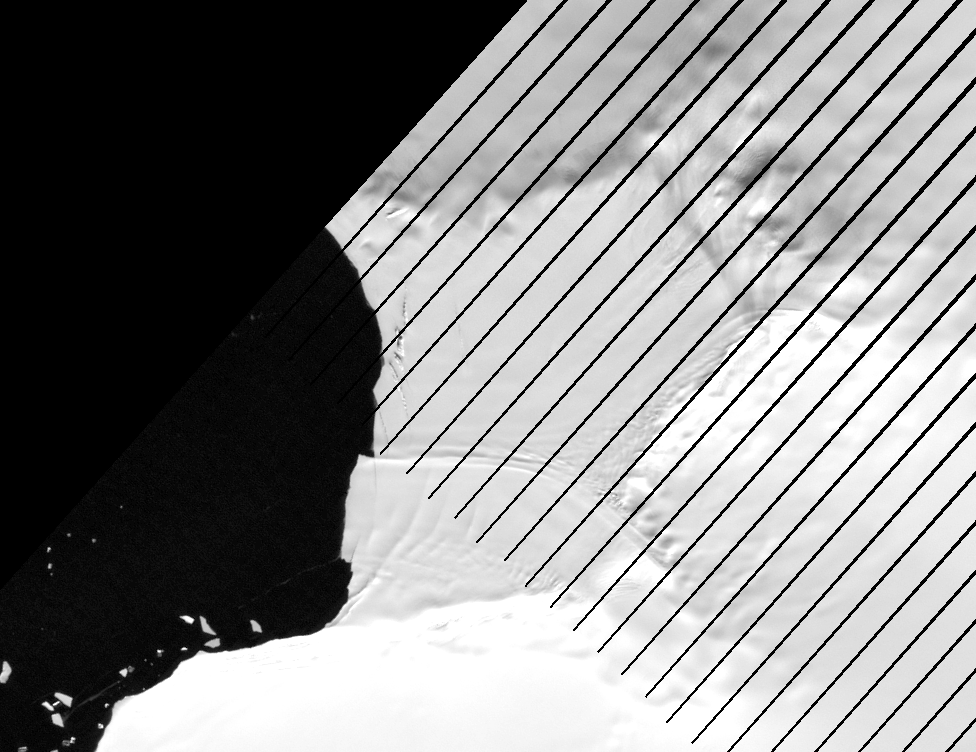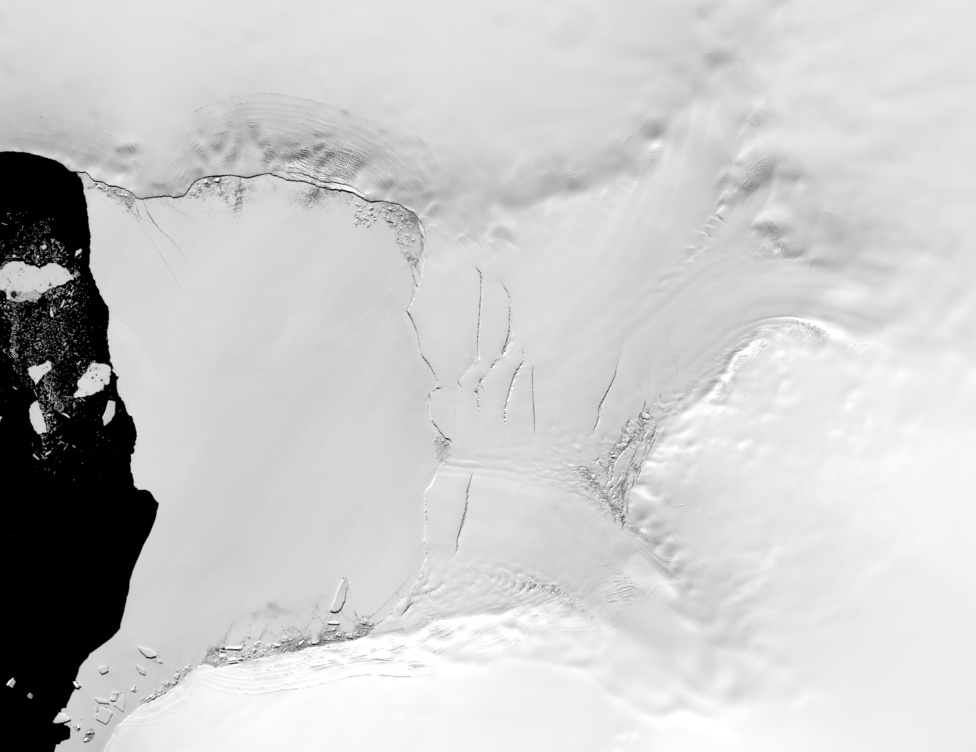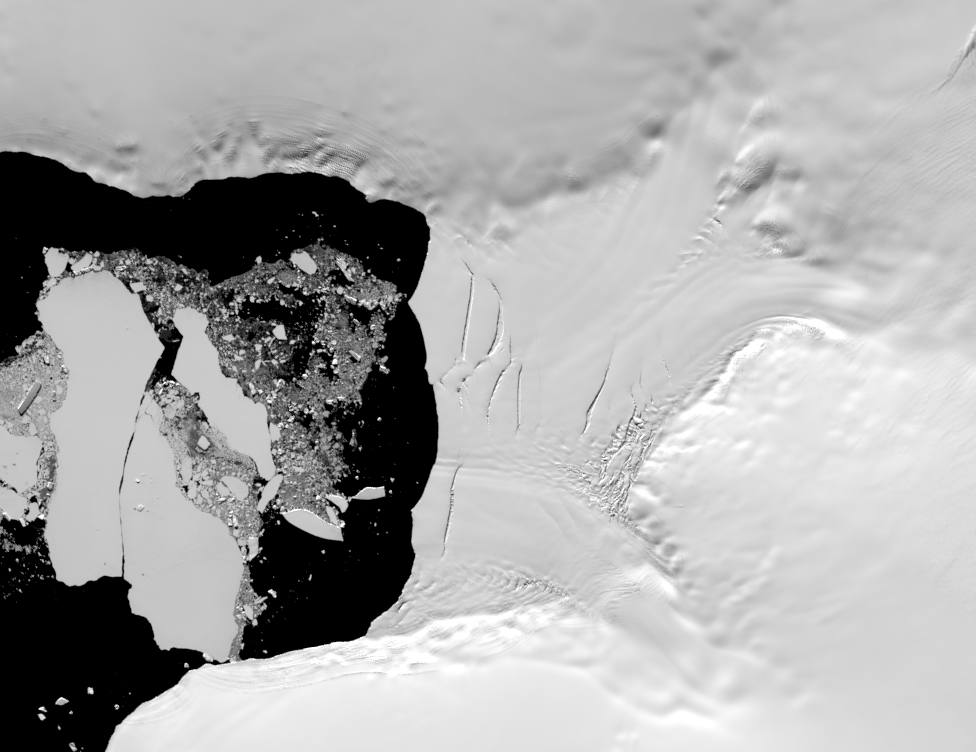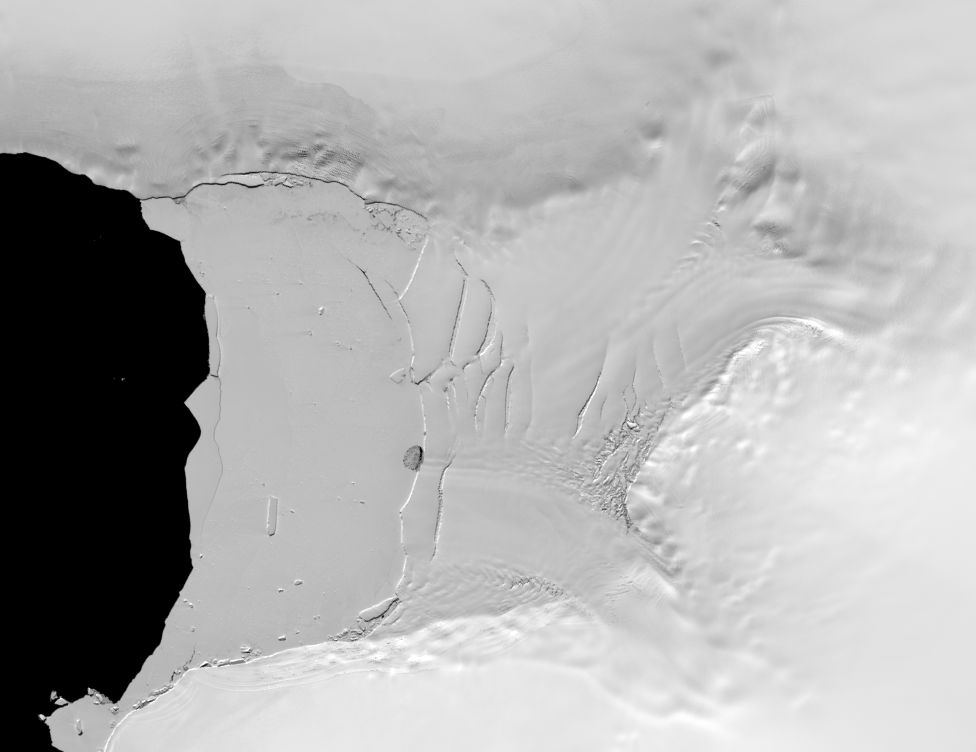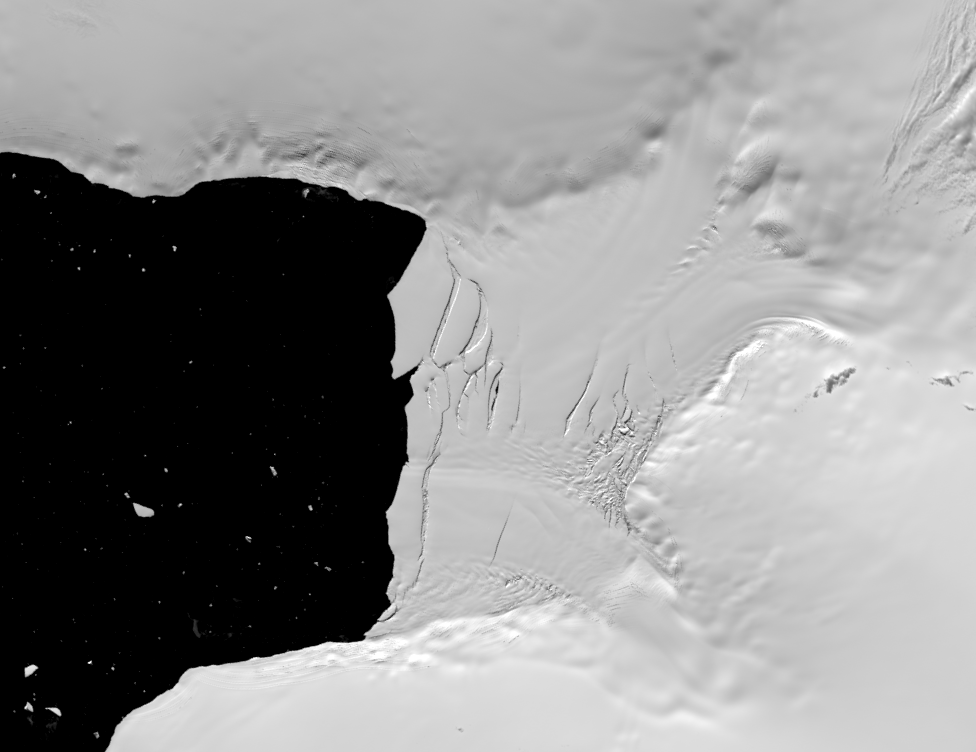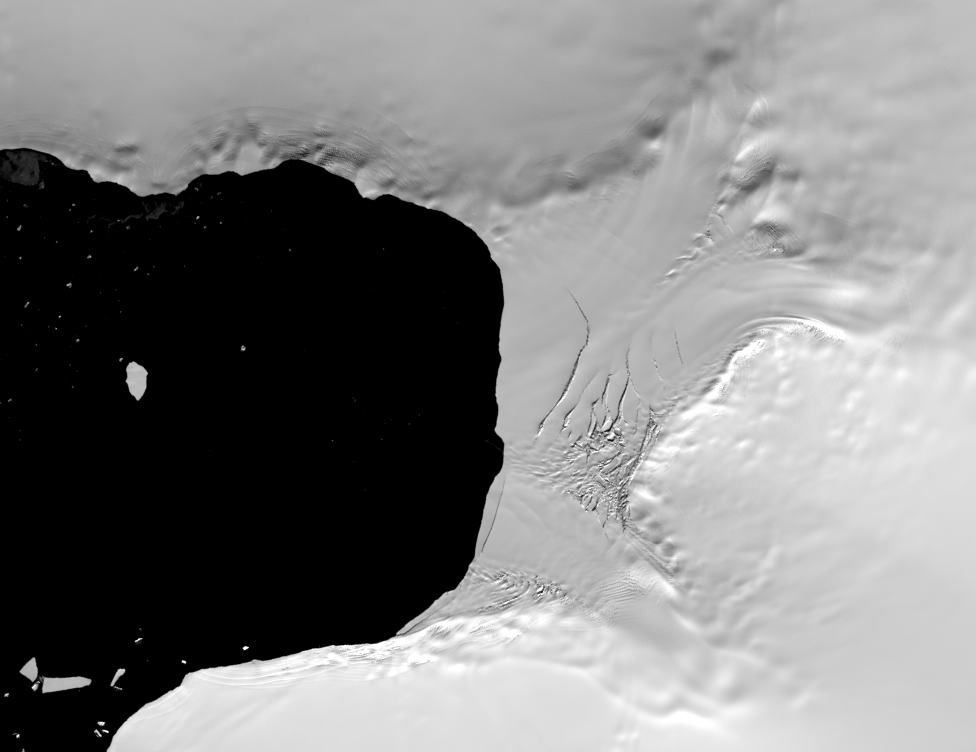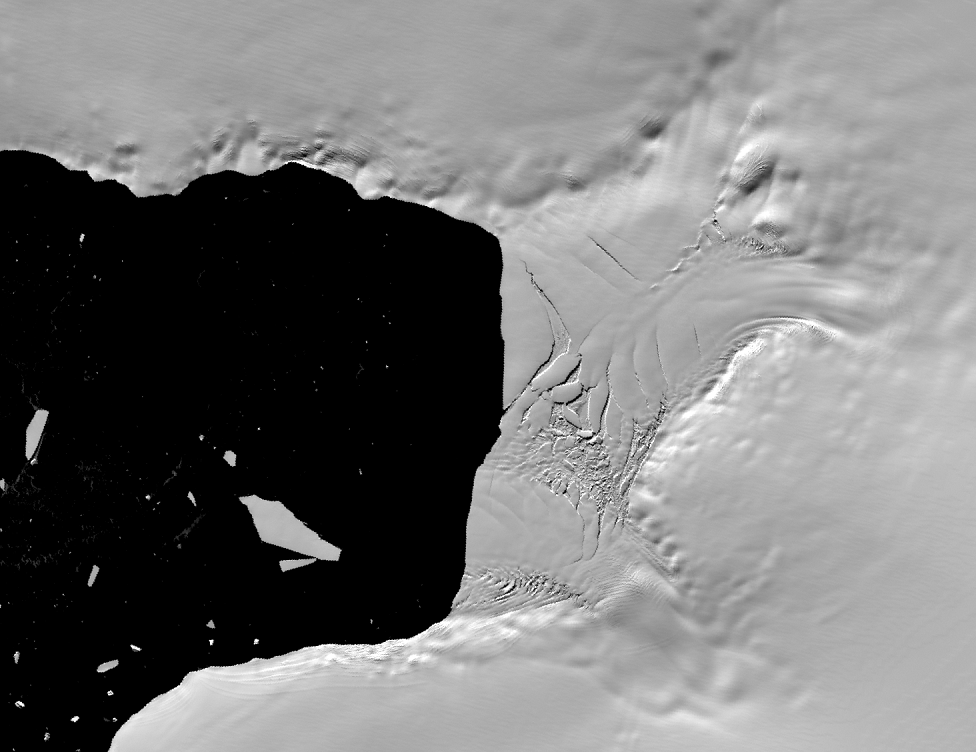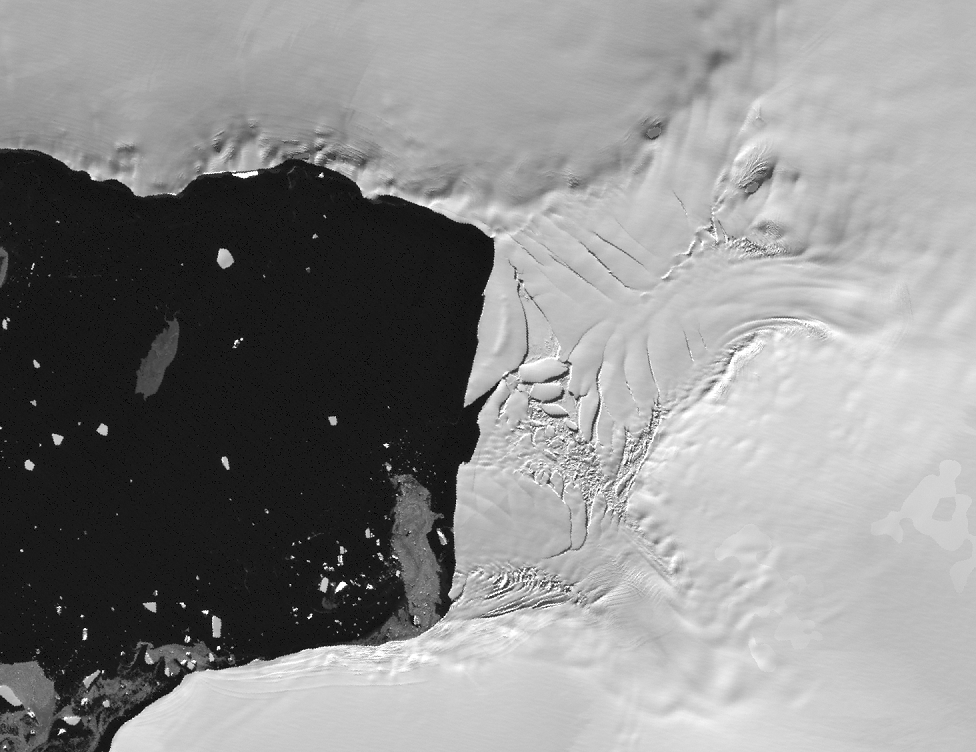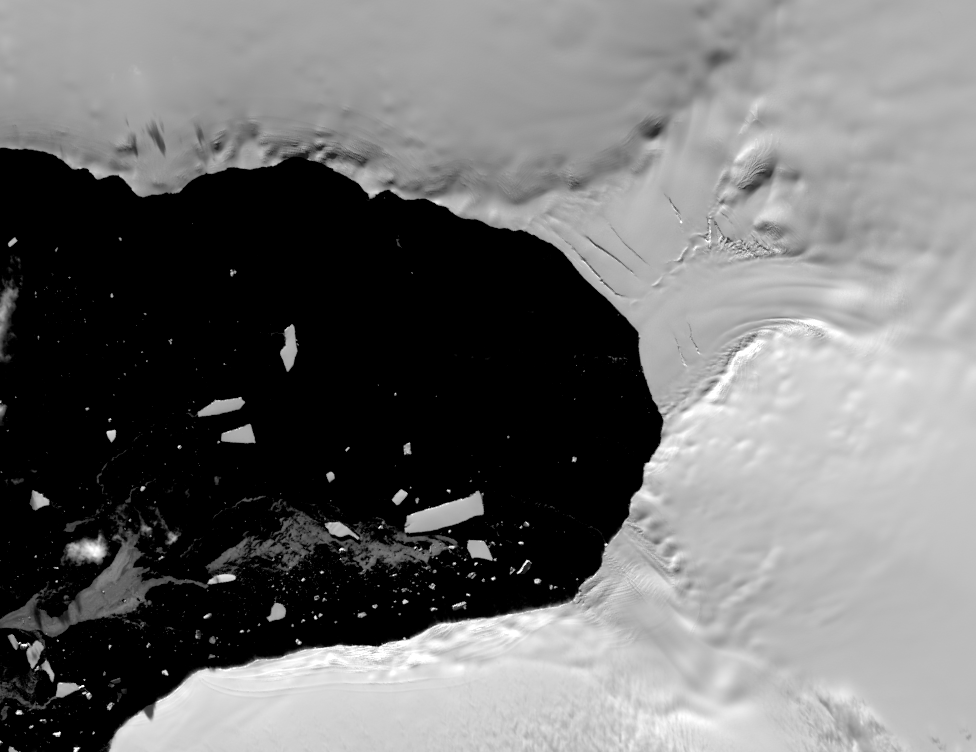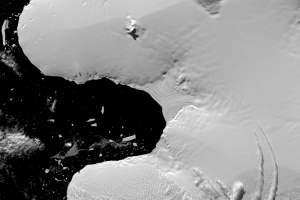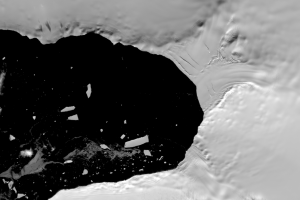
Rifts
Earth Resources Observation and Science (EROS) Center - Earthshots
Ice shelves act as doorstops. They hold back the glaciers that flow to the ocean and slow them down. Even small ice shelves like Verdi help regulate the volume of ice that glaciers deposit into the ocean.
Evidence of ice shelf instability can be seen in Landsat imagery. As ice shelves become thinner, rifts can form in the ice, a sign of structural weakening. In these images of Verdi, the rifts range in length from 2 to 4 kilometers. The entire shelf width is only about 10 kilometers. Landsats 8 and 9 can monitor Antarctic ice shelves with enough frequency to see if these rifts expand. The size of these rifts along with their rapid development suggests that Verdi is becoming increasingly unstable.
Another characteristic of thinning seen in Verdi is ice front retreat: the result of this retreat is the front boundary of the shelf bows inward toward the center. The Verdi ice front retreated 1.5–2 kilometers from 1973 to 2001. It retreated another 2 kilometers by 2014.
All of this evidence points to the real possibility of Verdi collapsing.

